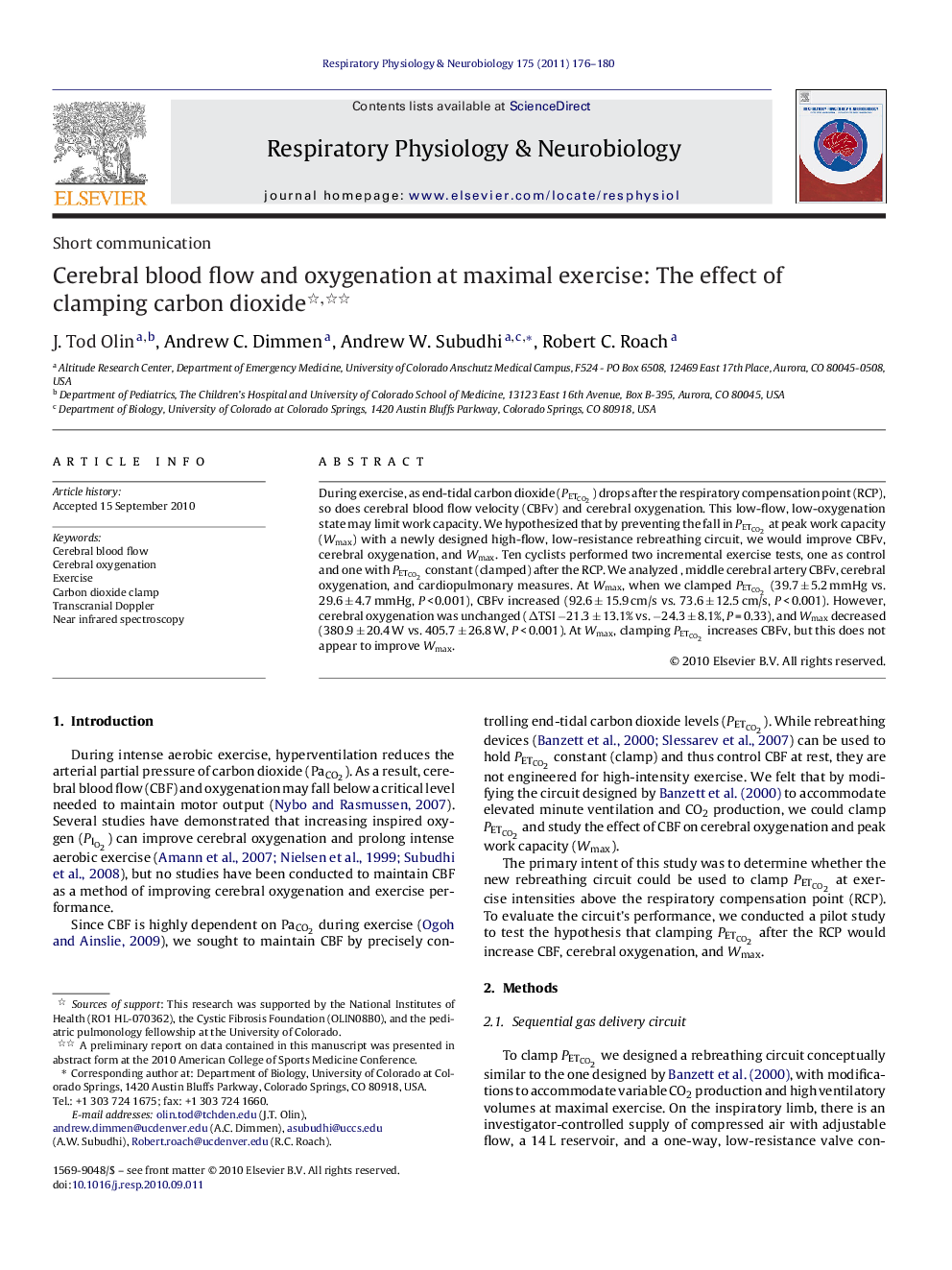| کد مقاله | کد نشریه | سال انتشار | مقاله انگلیسی | نسخه تمام متن |
|---|---|---|---|---|
| 5926585 | 1167373 | 2011 | 5 صفحه PDF | دانلود رایگان |
عنوان انگلیسی مقاله ISI
Cerebral blood flow and oxygenation at maximal exercise: The effect of clamping carbon dioxide
دانلود مقاله + سفارش ترجمه
دانلود مقاله ISI انگلیسی
رایگان برای ایرانیان
کلمات کلیدی
موضوعات مرتبط
علوم زیستی و بیوفناوری
بیوشیمی، ژنتیک و زیست شناسی مولکولی
فیزیولوژی
پیش نمایش صفحه اول مقاله

چکیده انگلیسی
During exercise, as end-tidal carbon dioxide (PETCO2) drops after the respiratory compensation point (RCP), so does cerebral blood flow velocity (CBFv) and cerebral oxygenation. This low-flow, low-oxygenation state may limit work capacity. We hypothesized that by preventing the fall in PETCO2 at peak work capacity (Wmax) with a newly designed high-flow, low-resistance rebreathing circuit, we would improve CBFv, cerebral oxygenation, and Wmax. Ten cyclists performed two incremental exercise tests, one as control and one with PETCO2 constant (clamped) after the RCP. We analyzed , middle cerebral artery CBFv, cerebral oxygenation, and cardiopulmonary measures. At Wmax, when we clamped PETCO2 (39.7 ± 5.2 mmHg vs. 29.6 ± 4.7 mmHg, P < 0.001), CBFv increased (92.6 ± 15.9 cm/s vs. 73.6 ± 12.5 cm/s, P < 0.001). However, cerebral oxygenation was unchanged (ÎTSI â21.3 ± 13.1% vs. â24.3 ± 8.1%, P = 0.33), and Wmax decreased (380.9 ± 20.4 W vs. 405.7 ± 26.8 W, P < 0.001). At Wmax, clamping PETCO2 increases CBFv, but this does not appear to improve Wmax.
ناشر
Database: Elsevier - ScienceDirect (ساینس دایرکت)
Journal: Respiratory Physiology & Neurobiology - Volume 175, Issue 1, 31 January 2011, Pages 176-180
Journal: Respiratory Physiology & Neurobiology - Volume 175, Issue 1, 31 January 2011, Pages 176-180
نویسندگان
J. Tod Olin, Andrew C. Dimmen, Andrew W. Subudhi, Robert C. Roach,